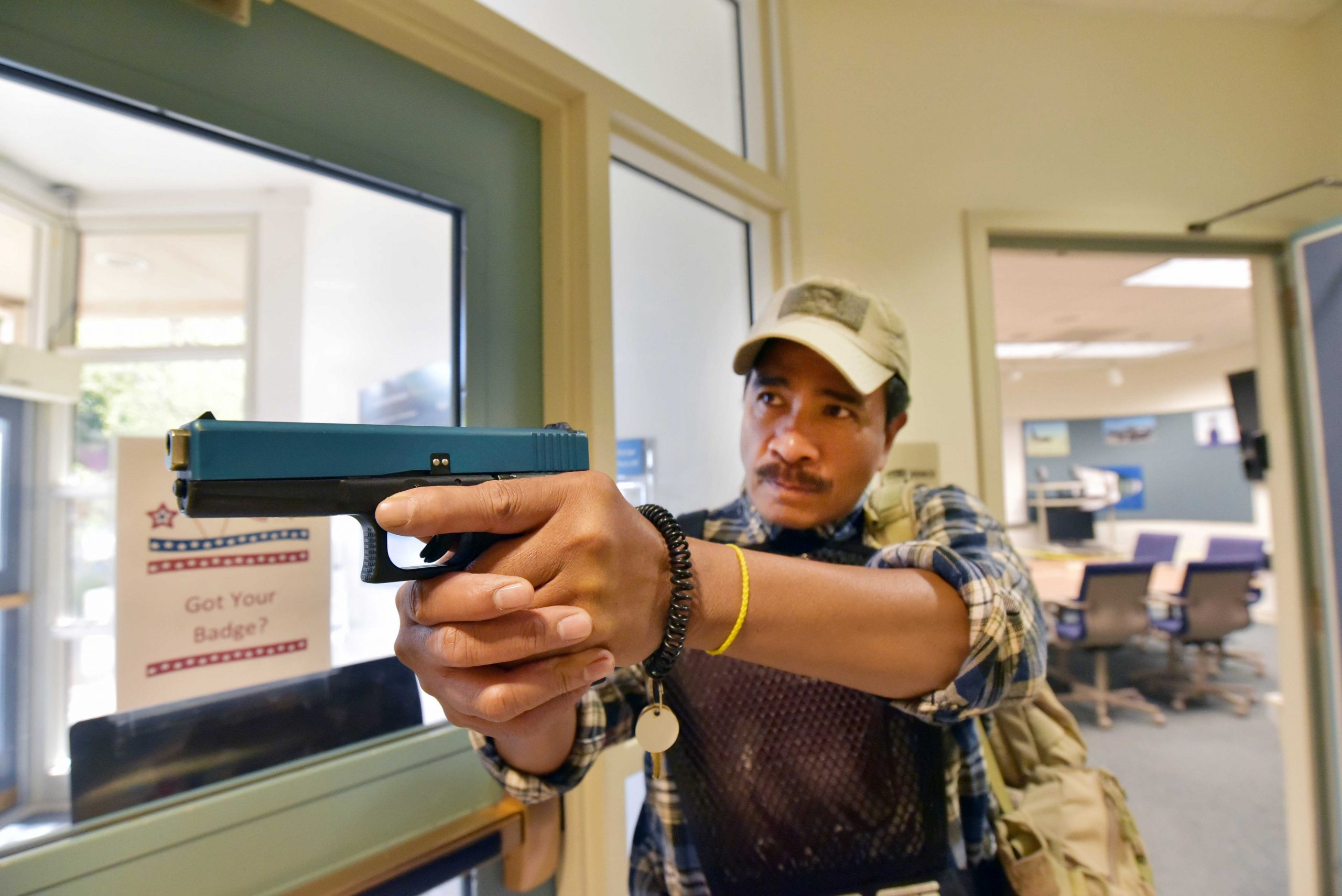ALBUQUERQUE, N.M. — Like a lot of concertgoers who attended Las Vegas’ Route 91 Harvest music festival, Sandia National Laboratories manager Marlene Lucero thought she was hearing fireworks when a round of gunfire rained down on fans. But then the man next to her husband fell, and a second wave of pops rang through the air.
That’s when she made her husband run.
Words echoed in her mind from active shooter training she took at Sandia just five days before the concert. If it’s possible, the best option is to run, the instructors had told her. So even as gunfire ricocheted all around, she and her husband didn’t stop moving until they were in a stranger’s car driving away from the Las Vegas Strip.
Lucero credits the active shooter training for saving her during the Oct. 1, 2017, mass shooting that left 59 people dead, including the shooter, and injured more than 500, the deadliest shooting in modern U.S. history. She noticed the exits as she and her husband, Eric Lucero, roamed the concert grounds that night — something she might not normally have done before the training.

“Seconds mattered,” she said. “It took no time, but I noticed where the exit was and it saved us precious seconds because we knew where to run.”
Workplace scenarios present realistic idea of options
Sandia’s Protective Force training staff has been offering reality-based active shooter training since 2010, after a shooting at the nearby former Emcore Corp. facility that killed three people and wounded four others. Before then, active shooter training had been reserved for officers, but afterward employees started requesting the training. Training staff suggested scenarios in the workplace to give participants a more realistic idea of what their options would be.
Protective Force Lt. Norman Baca said one benefit of businesses teaching reality-based scenarios is that employees can take the knowledge with them everywhere – movie theaters, restaurants or events. Seventy percent of active shooter situations occur in businesses or schools, so if a business offers this type of training, employees benefit simply by being more aware, he said.
“It’s sad that we have to do this,” Baca said, “but this is the world we live in. I believe everyone needs this training. These incidences are happening all around us at malls, churches, military installations, health care facilities, open spaces and concerts.”
Manager Bill Boling said training officers use infrared tactical weapons, which are like laser tag guns. Officers and the “shooter” are outfitted with stress vests and shock belts that emit a shock when hit, signaling the participant has been taken out.
“We use a pop gun that replicates the sound of gunfire,” Baca said. The idea is to get participants familiar with the sound so they know when to react.
“When the hairs on the back of your neck stand up, when you get that feeling, go. What we’ve done is we’ve tried to make it as real as possible,” he said. “We try to utilize the facilities here at the labs, the office spaces, the conference rooms, anywhere where something might take place.”
Baca and Protective Force Lt. Andy Tabios emphasize waiting for the worst is not the only option.
Training teaches participants to never give up
“The sad fact is a lot of good people, just before lights out, the last thought through their mind is, ‘This can’t be real, this can’t be happening to me,’” Baca said. “If that’s your thought in a hostile environment, you’ve already lost. You’re already behind the power curve. Rather your first thought should be, ‘I thought this might happen and I know what to do.’”
If people can run, they should and not look back, Baca said.
That was the thought that kept coming back to Lucero in Las Vegas.
“It was interesting because that’s what clicked. Like at the time, it was run,” she said. “That’s your best option. Even if you are in close proximity of the shooter, if you’re moving, it’s harder for them to hit you.”
If people can’t run and have to hide, they can use tables, chairs and cabinets as barriers to better secure their hiding place. As a last option, they can fight — throwing objects, creating distractions and physically fighting back.
Baca said teaching the physical response to an active shooter is easy. Trying to teach mental stability in a crisis is much harder. What happens most often, he said, is people freeze and do nothing.
Tabios said giving up is not an option.
“If your mind says give up, your body just follows,” he said. “In the military, if you’re in a losing situation, you come up with something else. Don’t ever give up.”